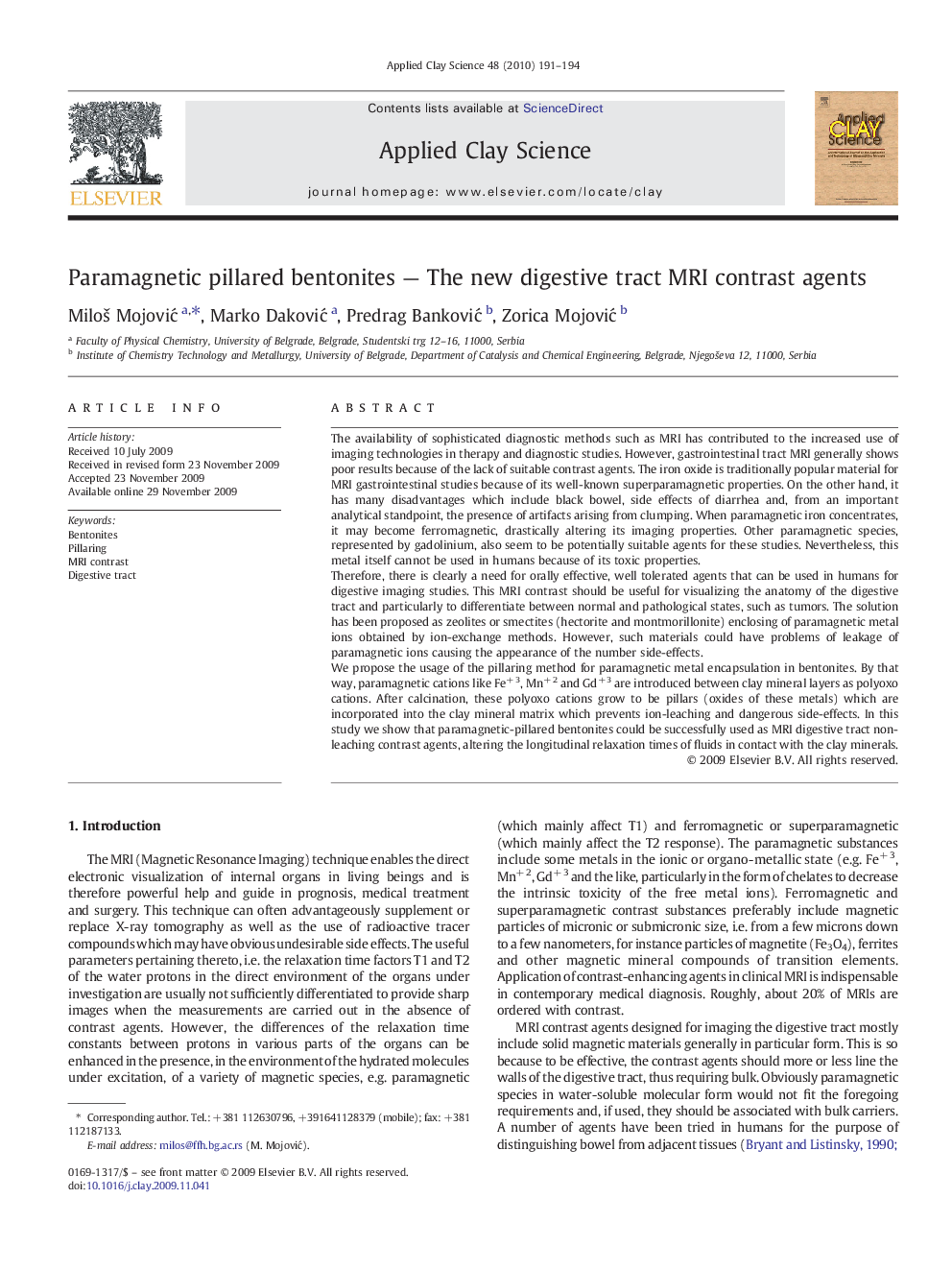| کد مقاله | کد نشریه | سال انتشار | مقاله انگلیسی | نسخه تمام متن |
|---|---|---|---|---|
| 1696061 | 1519117 | 2010 | 4 صفحه PDF | دانلود رایگان |

The availability of sophisticated diagnostic methods such as MRI has contributed to the increased use of imaging technologies in therapy and diagnostic studies. However, gastrointestinal tract MRI generally shows poor results because of the lack of suitable contrast agents. The iron oxide is traditionally popular material for MRI gastrointestinal studies because of its well-known superparamagnetic properties. On the other hand, it has many disadvantages which include black bowel, side effects of diarrhea and, from an important analytical standpoint, the presence of artifacts arising from clumping. When paramagnetic iron concentrates, it may become ferromagnetic, drastically altering its imaging properties. Other paramagnetic species, represented by gadolinium, also seem to be potentially suitable agents for these studies. Nevertheless, this metal itself cannot be used in humans because of its toxic properties.Therefore, there is clearly a need for orally effective, well tolerated agents that can be used in humans for digestive imaging studies. This MRI contrast should be useful for visualizing the anatomy of the digestive tract and particularly to differentiate between normal and pathological states, such as tumors. The solution has been proposed as zeolites or smectites (hectorite and montmorillonite) enclosing of paramagnetic metal ions obtained by ion-exchange methods. However, such materials could have problems of leakage of paramagnetic ions causing the appearance of the number side-effects.We propose the usage of the pillaring method for paramagnetic metal encapsulation in bentonites. By that way, paramagnetic cations like Fe+ 3, Mn+ 2 and Gd+ 3 are introduced between clay mineral layers as polyoxo cations. After calcination, these polyoxo cations grow to be pillars (oxides of these metals) which are incorporated into the clay mineral matrix which prevents ion-leaching and dangerous side-effects. In this study we show that paramagnetic-pillared bentonites could be successfully used as MRI digestive tract non-leaching contrast agents, altering the longitudinal relaxation times of fluids in contact with the clay minerals.
Journal: Applied Clay Science - Volume 48, Issues 1–2, March 2010, Pages 191–194